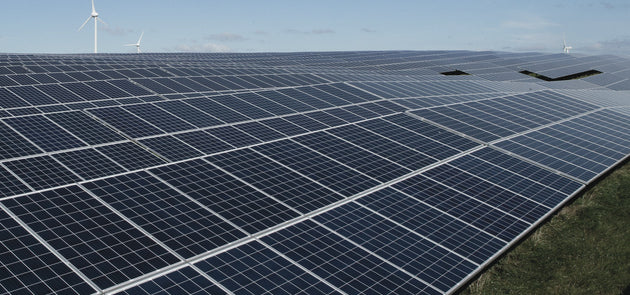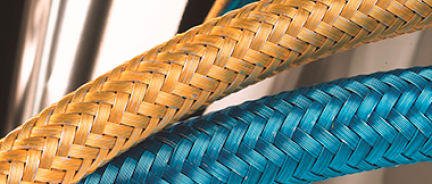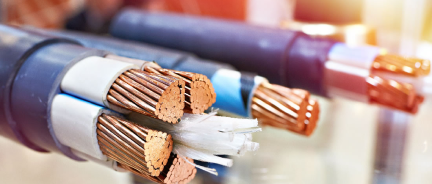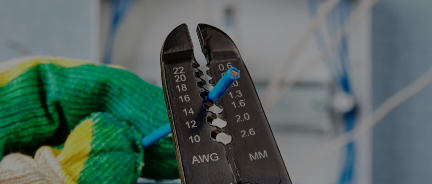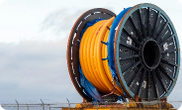NEC 220: A Practical Guide to Load Calculations for Feeders and Services

The National Electrical Code (NEC) Article 220 provides the methods for calculating electrical loads in residential, commercial, and industrial buildings. For an average user, these rules specifically come into place when you are designing a branch circuit or sizing up a service panel.
This guide breaks down the standard and optional methods, key load types, and critical considerations like continuous loads, demand factors, and neutral sizing.
Branch Circuits vs. Feeders vs. Services
The article outlines load calculations for three levels of conductors in the electrical system: branch circuits, feeders, and service conductors.
- Branch circuits serve individual loads such as outlets, lights, or a single appliance.
- Feeders carry power from the service equipment (main panel) to subpanels, serving groups of branch circuits.
- Service conductors bring electricity from the utility service point to the main service disconnect or main panel.
How the calculations differ:
- Branch circuits are calculated per device or per square foot (NEC 220.14 and 220.12).: Per device is used when the load is tied to a specific piece of equipment or outlet, like a range or dryer. Per square foot is used for general receptacles like lighting circuits.
- Feeders combine multiple branch circuits and apply diversity/demand factors (NEC 220.42–220.61) because multiple loads do not work at the same time.
- Service loads combine the entire building load, including the largest heating or cooling load and continuous load adjustments (NEC 220.40, 220.60).
Each step up (branch → feeder → service) applies broader aggregation and more adjustments to reflect real-world diversity and ensure safe conductor sizing.
Methods for Load Calculation
1. Standard Method
(NEC 220.10–220.61)
Required for non-dwelling occupancies or dwelling units that don’t qualify for the Optional Method (are less than 100 A).
- Calculate each load individually: lighting, receptacles, appliances, HVAC, motors.
- Apply demand factors (NEC Tables 220.42, 220.55, 220.54).
- Add adjustments for continuous loads and the largest motor. Continuous loads (those expected to run for three hours or more) must be calculated at 125% of their rating, and the largest motor on the system must also be taken at 125%.
- Determine neutral size based on unbalanced loads. The neutral conductor is sized based on the maximum unbalanced load.
Demand Factors Via Standard Method:
-
General Lighting and Receptacles (NEC 220.42, Table 220.42)
- First 3,000 VA at 100%.
-
Remainder of general lighting/receptacle load reduced based on occupancy type:
- Dwelling units, hotels, motels, warehouses → 35%
- Hospitals → 50%
- Warehouses → 40%
- Stores, banks, restaurants, schools, etc. → 100%
-
Small Appliance and Laundry Circuits (NEC 220.52)
- Each required a small-appliance and laundry branch circuit → 1,500 VA each.
- Included in general lighting load before applying Table 220.42.
-
Cooking Equipment (NEC 220.55, Table 220.55)
- Applies to household electric ranges, wall ovens, counter cooktops.
-
Demand factor depends on number of units and kW rating:
- 1 range at 12 kW = 12 kW.
- 2 ranges at 12 kW = 19 kW total (not 24 kW).
- 12 ranges at 12 kW = 65 kW total (not 144 kW).
- Special notes in Table 220.55 allow adjustments for larger or smaller appliances.
-
Clothes Dryers (NEC 220.54)
- Each dryer counted at 5,000 VA minimum (or nameplate, whichever is larger).
-
Demand factor for multiple dryers:
- 2 dryers → 100% each.
- 3 or more dryers → 100% of largest + 85% of all others.
-
Other Fastened-in-Place Appliances (NEC 220.53)
- If there are 4 or more fastened-in-place appliances (excluding HVAC), the total load can be 75%.
-
Motors (NEC 220.50)
- The largest motor must be counted at 125% of its full-load current.
- Remaining motors at 100%.
-
HVAC (NEC 220.60)
- Noncoincident loads (like heating vs. cooling) → Only the larger load is included.
-
Continuous Loads (NEC 210.20(A), 215.3)
- Any load expected to run 3 hours or more → calculated at 125%.
-
Neutral Load (NEC 220.61)
- Neutral sized for the maximum unbalanced load after all adjustments.
2. Optional Method
(NEC 220.82–220.88)
Streamlined approach allowed only for dwelling units 100A or larger. Instead of calculating each load type individually with different demand factors (like in the Standard Method), the Optional Method bundles general loads together and applies one simplified demand factor.
- Combine general loads:
- – Lighting/receptacles: 3 VA per sq ft
- – Small appliance: 2 × 1,500 VA
- – Laundry: 1 × 1,500 VA
- Add appliances, HVAC, ranges at nameplate rating.
- Apply demand factor of 80% for portion over 10,000 VA.
- Add 25% of the largest motor.
- Convert total VA to amperage (VA ÷ 240 V).
Important: Use only the larger of the heating or cooling load, not both, unless they run simultaneously.
Load Categories in Article 220
General Lighting and Receptacles (NEC 220.12)
Use unit loads per square foot:
- Dwelling units → 3 VA/sq ft
- Office buildings → 3.5 VA/sq ft
- Retail stores → 3 VA/sq ft
- Schools → 3 VA/sq ft
- Warehouses → 0.25 VA/sq ft
- Armories and auditoriums → 1 VA/sq ft
- Banks → 3 VA/sq ft
- Barber shops and beauty parlors → 3½ VA/sq ft
- Churches → 1 VA/sq ft
- Clubs → 3 VA/sq ft
- Courtrooms → 2 VA/sq ft
- Dormitories → 2 VA/sq ft
- Factories (limited areas) → 3 VA/sq ft
- Hospitals → 2 VA/sq ft
- Hotels and motels (excluding dwelling unit portions) → 2 VA/sq ft
- Lodge rooms → 2 VA/sq ft
- Museums → 2 VA/sq ft
- Nursing homes → 2 VA/sq ft
- Restaurants → 2 VA/sq ft
- Stables → 2 VA/sq ft
- Storage buildings → 0.5 VA/sq ft
- Theaters (audience areas) → 2 VA/sq ft
- Transportation terminals → 3 VA/sq ft
Multiply the square footage by the VA value. Apply demand factors from Table 220.42 if applicable.
Small Appliance and Laundry Circuits (NEC 220.52)
- Small appliance circuits: 1,500 VA each (minimum two required).
- Laundry circuits: 1,500 VA for a dedicated laundry circuit.
Both are included with general lighting for demand factor purposes.
Fastened-in-Place Appliances (NEC 220.53)
- Add all fixed appliances (dishwasher, disposal, water heater, etc.).
- Apply a 75% demand factor if 4 or more appliances are connected.
- Does not apply to ranges, dryers, HVAC, or space heating (these have their own rules).

Appliance Load Rules Within Article 220
- Electric dryers (NEC 220.54)
- Household cooking appliances (NEC 220.55)
- Appliances used in instructional programs (NEC 220.56)
- Space heating and air conditioning (NEC 220.60)
These subsections override general rules and must be applied where applicable.
Electric Ranges and Ovens (NEC 220.55)
For 1–50+ electric ranges rated over 1¾ kW, use Table 220.55. Example:
- 1 range = 100%
- 2 ranges = 75%
- 3 ranges = 70%
- 12–17 ranges = 45%
- 41–50 ranges = 30%
For ranges over 12 kW, adjust upward by 5% per kW over 12 kW (see Notes 1–3).
Heating vs. Cooling Loads (NEC 220.60)
- Use only the larger of heating or cooling loads if they are mutually exclusive.
- Add both if they can operate simultaneously (e.g., baseboard heat + window AC).
Continuous Loads (NEC 215.2(A)(1)(a))
A continuous load is any load expected to run for 3 hours or more continuously.
Examples:
- Office or warehouse lighting
- Parking garage exhaust fans
- Emergency or exit lighting
Rule: Multiply continuous loads by 125% when sizing conductors and OCPDs.
Receptacle Load Calculations (NEC 220.14)
- Each receptacle = 180 VA minimum (single or multiple on one yoke).
- For 4+ receptacles on one yoke, you may use 90 VA per receptacle.
Neutral Load (NEC 220.61)
The neutral conductor carries the unbalanced current between line conductors.
-
Full Rule (Technical Accuracy):
- Size the neutral for 100% of the first 200A of unbalanced load.
- For any excess above 200A, you may size at 70% of that excess.
-
Example:
- Unbalanced load = 400A.
- First 200A = 100% → 200A.
- Remaining 200A × 70% = 140A.
- Total neutral capacity required = 340A.
-
When 70% may NOT apply:
- If significant non-linear loads are present (harmonics).
- In commercial/industrial occupancies where neutral imbalance is unpredictable.
- Where local AHJ requires full neutral sizing.
Feeder and Service Load Calculations (NEC 220.40–220.61)
- Feeder Load: Sum of branch-circuit loads downstream, adjusted by demand factors and continuous load rules.
- Service Load: Sum of all feeder loads for the entire building plus adjustments for the largest heating or cooling load.
Optional Feeder and Service Load Calculations (NEC 220.82–220.88)
This method is a simplified way to size feeders or services for dwelling units 100A or larger. Instead of calculating every load separately with different demand factors, you combine most loads into one total and then apply a single reduction rule.
Add general loads together
- General lighting and receptacle load = 3 VA per sq ft (220.12).
- Small appliance circuits = 2 × 1,500 VA.
- Laundry circuit = 1 × 1,500 VA.
- Fixed appliances, cooking equipment, and other loads at nameplate rating.
Apply the demand factor
- Take 100% of the first 10,000 VA.
- Take 40% of all VA above 10,000.
- → This is where most of the “savings” in the Optional Method come from — it reduces the calculated load compared to the Standard Method.
Add HVAC load
- Include either the heating load or the cooling load, whichever is larger.
- Exception: if both can run simultaneously, you must include both.
Add 25% of the largest motor
- Just like in the Standard Method, the largest motor gets an extra 25% added for starting/surge capacity.
Convert total VA to amperage
- Divide the total volt-amps by the system voltage (usually VA ÷ 240 V) to get the feeder or service ampacity.
Expert Tips & Common Pitfalls
- Don’t forget future expansion: NEC does not require oversized feeders, but it’s wise to add headroom.
- When using the Optional Method, validate that conditions meet NEC 220.82 before applying it.
- Use nameplate ratings over general estimates for fixed appliances whenever available.
- Always verify if local jurisdictions have stricter rules or amendments to the NEC.
- For multi-occupancy buildings, use NEC 220.40–220.84 and carefully apply diversified demand loads.
Appliances Covered in Other Articles (NEC Table 220.3)
Some appliances and loads are governed by other NEC articles, which override or modify Article 220:
- Motors: Article 430
- HVAC equipment: Article 440
- Elevators: Article 620
- Welders: Article 630
- Irrigation: Article 675
- EV chargers: Article 625
- Solar PV: Article 690
- Fire pumps: Article 695
- Lighting in studios: Article 530





